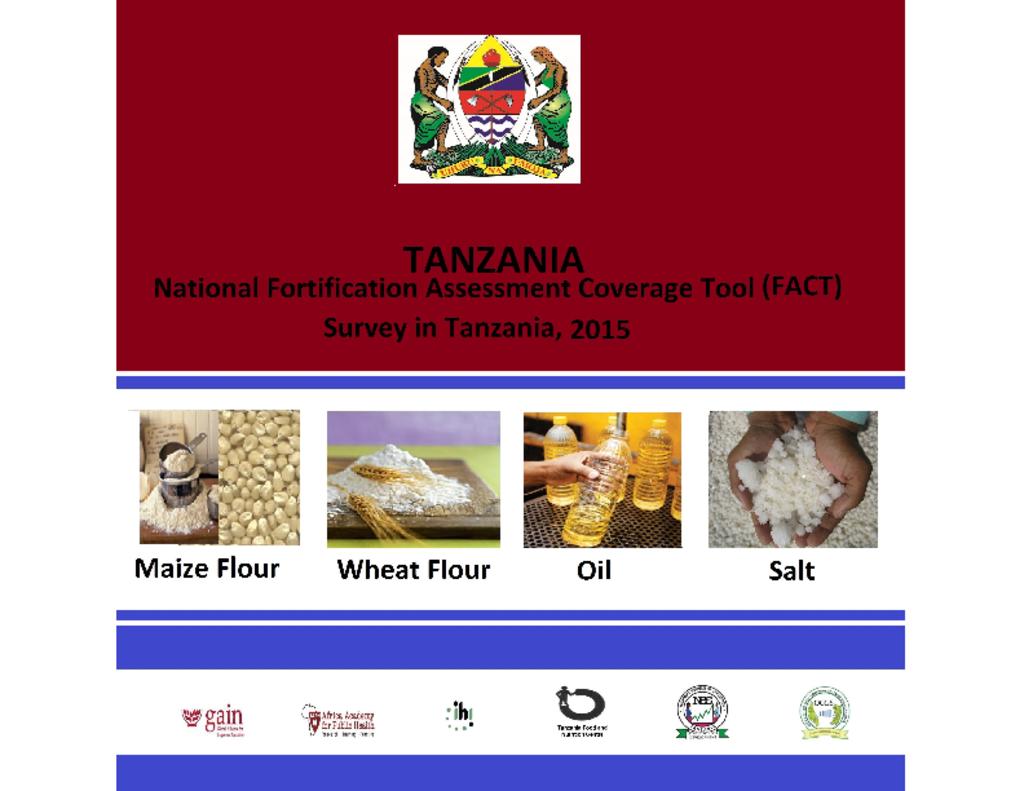In Tanzania, national fortification of salt with iodine began in the 1990’s, and fortification of wheat and maize flour with multiple micronutrients and oil with vitamin A has been mandated by law since 2011. Currently, there is a lack of information available on how well these programmes are performing, household coverage and intake of fortified foods, and if vulnerable populations are being reached.
In 2015, the Global Alliance for Improved Nutrition (GAIN), the United States Centers for Disease Control and Prevention (CDC), the Africa Academy of Public Health (AAPH), Ifakara Health Institute and the National Bureau of Statistics (NBS), conducted a cross-sectional, two-stage, cluster household Fortification Assessment Coverage Toolkit (FACT) survey in Tanzania. The purpose of the survey was to assess the household coverage and potential contribution of fortified foods to the micronutrient intake among women of reproductive age.
The survey was designed to be nationally representative and representative by rural and urban areas of the country. Data were collected on: household demographics and socioeconomic status; education levels within the household; housing conditions; recent infant and child mortality; water, sanitation, and hygiene (WASH) practices; food security; women’s dietary diversity; and coverage and consumption of fortified oil, wheat flour, maize flour, and salt. Food samples of oil, wheat flour, maize flour, and salt were collected from participating households and analysed quantitatively to determine fortification levels of select nutrients.
The results revealed there is high coverage of fortifiable oil and salt in all areas indicating high potential for impact from fortified foods. Coverage of fortifiable wheat and maize flour is lower than other food vehicles, but there is high potential for impact among urban populations. Fortification adequacy remains a concern for all food vehicles; further efforts are needed to improve quality and enforcement to better address under and over fortification to maximize impact.
